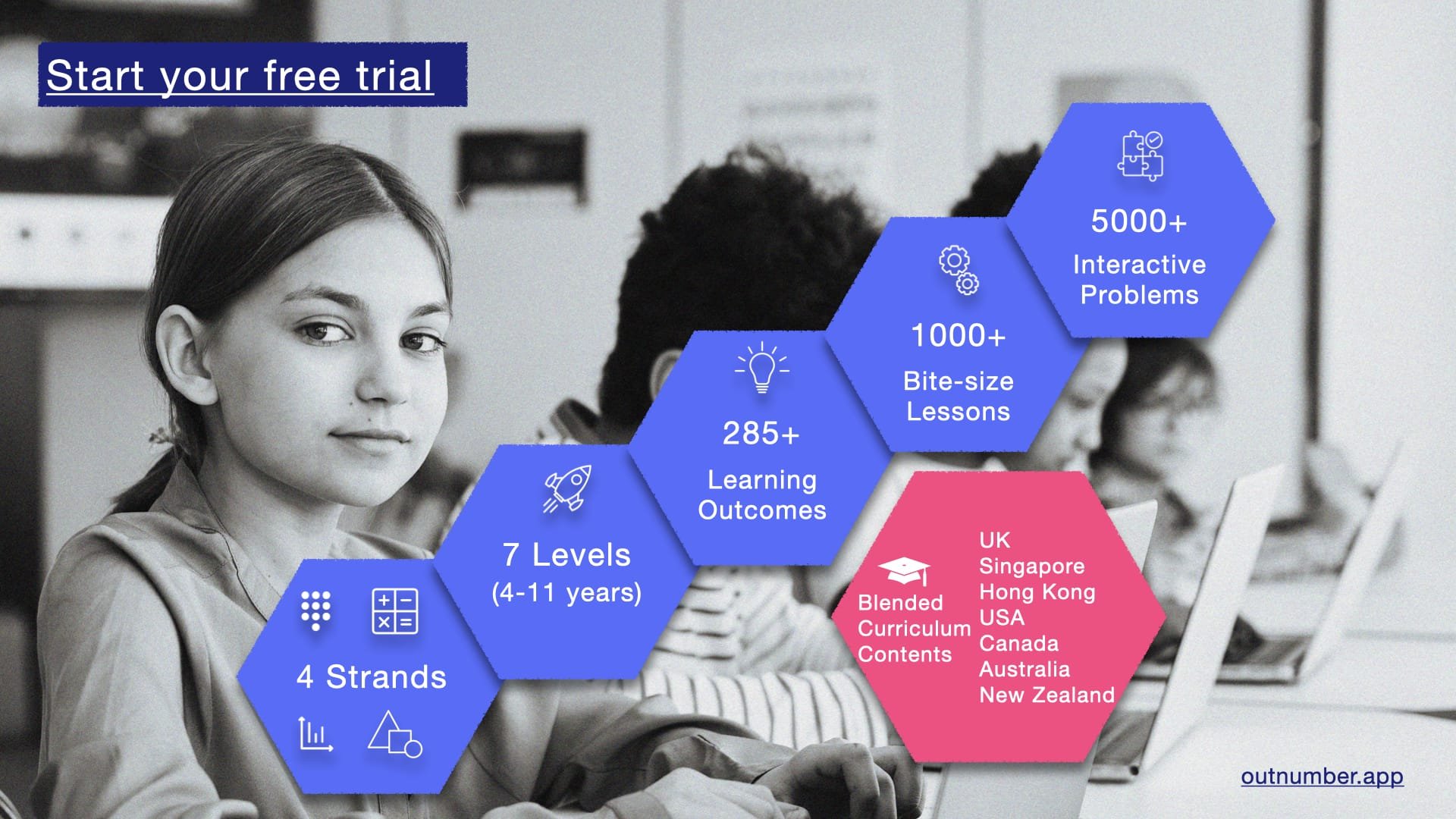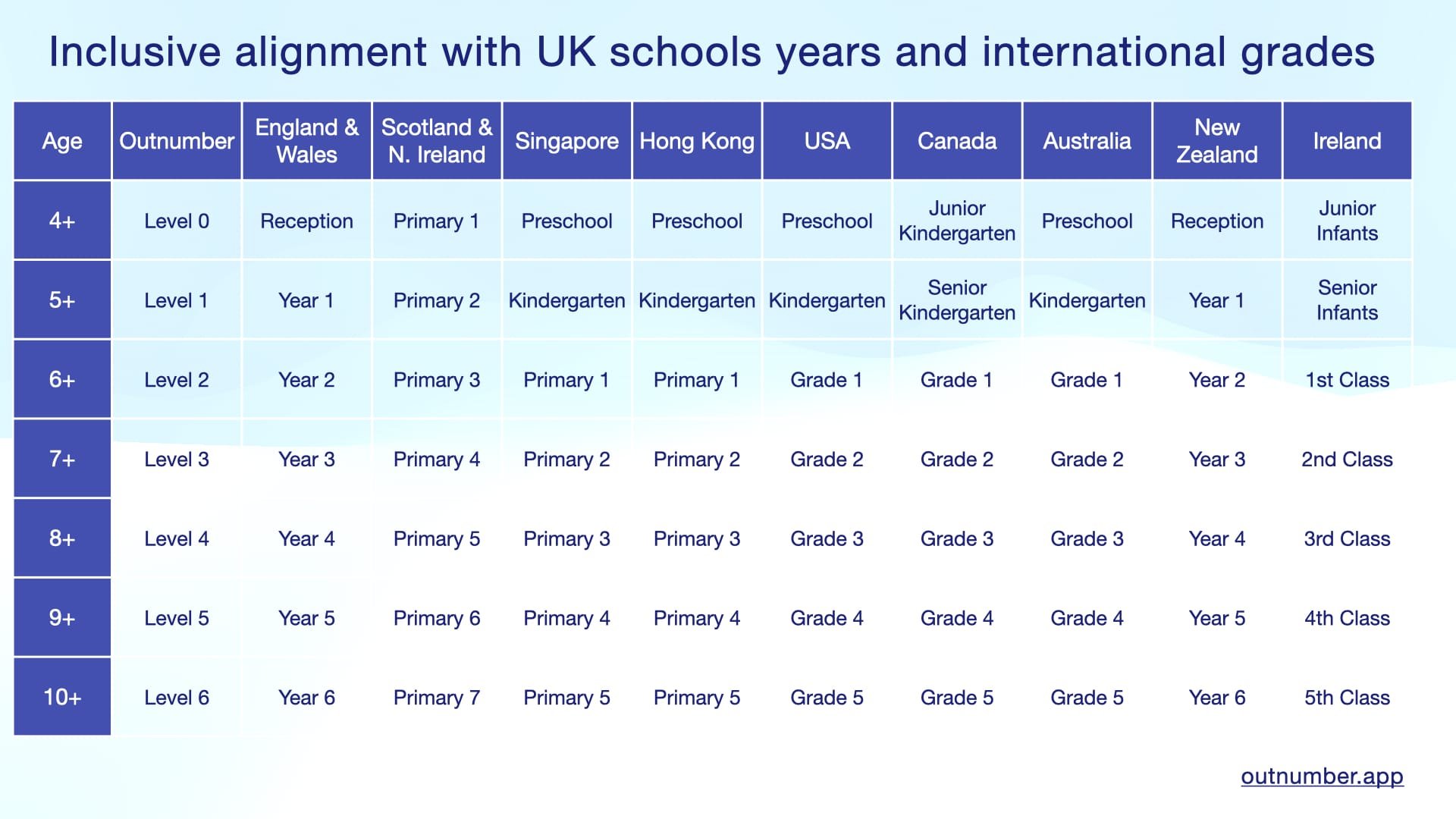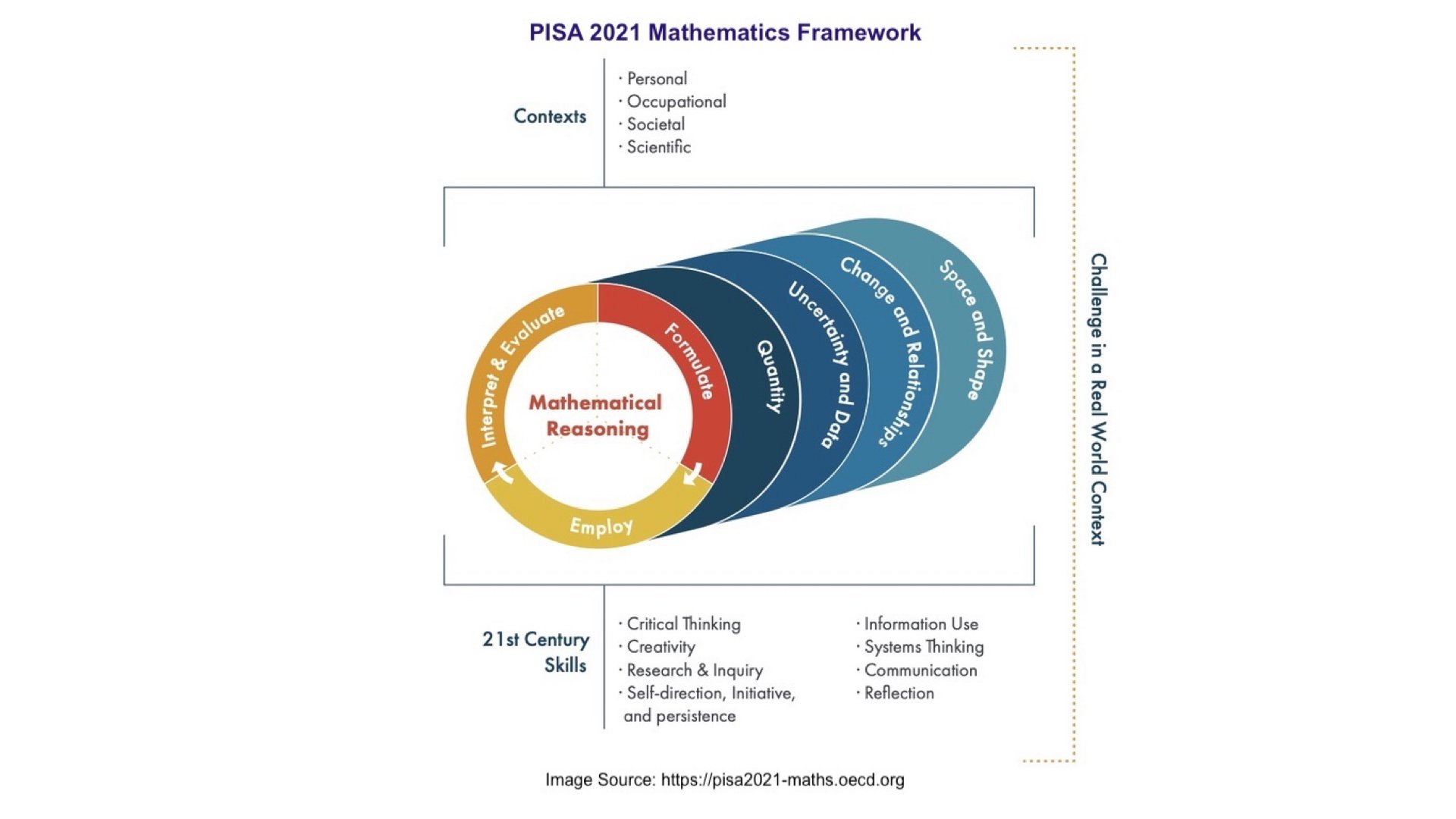Learn through context-rich problems on broad and balanced contents
Enriched curriculum with a modern approach to mathematics
Primary maths competency is a fundamental driver for success in secondary school and beyond. By combining national requirements with the internationally recognised PISA framework for maths assessment, we provide a comprehensive foundation in numeracy.
Get started now
Outnumber Primary Module
✔︎ Whole numbers, fractions, mixed numbers, decimals, percentages and ratios
✔︎ An understanding of place value for whole numbers, fractions and decimals
✔︎ Prime numbers, composite numbers, square, cube and triangular numbers
✔︎ Using number sense, rounding and estimation to find accurate and approximate solutions, which can include decimals
✔︎ Making connections between equivalent fractions, decimals and percentages
✔︎ Relationship between fractions and ratios, simplifying and equivalent ratios, using ratio notation and dividing into a given ratio
✔︎ Recognise units, using correct notation and symbols
✔︎ The four arithmetic operations with whole numbers, fractions, mixed numbers and decimals with an understanding of the role of brackets
✔︎ Understanding percentage increase/decrease, factors and multiples
✔︎ Exploring relationships between distance, time and speed, as well as changing speed
✔︎ Expressing relationships using variables and simple equations, finding unknowns by solving simple linear equations and using substitution to further evaluate
✔︎ Recognise the relationships between numbers and fractions in a sequence, compare and order numbers as well as understand and use the inverse of operations to check solutions
✔︎ An understanding of rate in contextual situations and calculating rate
✔︎ Data Collection, Display and Interpretation: identify and carry out data collection methods and compare and interpret data using bar charts, pie charts, area charts and line graphs, including interpreting different scales on axes
✔︎ Data Analysis: explore the concept of variability in a dataset and how that relates to concepts of mean, median and range
✔︎ Chance: describe probabilities using fractions, decimals and percentages and recognise mutually exclusive and non-mutually exclusive scenarios
✔︎ Chance: explore chance experiments with both small and large numbers of trials and compare observed frequencies with expected frequencies
✔︎ 2D Shapes and Patterns: areas, perimeters and other properties of triangles, rectangles, different quadrilaterals and 2D shapes (including circles and composite shapes)
✔︎ 3D Shapes and Patterns: understanding shape properties, finding volume of a cube/cuboid, building different solids from unit cubes and finding volume
✔︎ Length, Volume and Weight: measure, compare and convert to different units using decimals
✔︎ Space, Position and Direction: translations, enlargements, reflections and rotations of 2D shapes; line and rotational symmetries; angles; four-quadrant coordinate grid; simple map interpretation
✔︎ Identify, compare and measure angles; use basic angle properties to find unknown angles; use understanding of angles to recognise regular and irregular polygons
✔︎ Recognise perpendicular and parallel lines
Inclusive curriculum design covers all learners
Outnumber is inclusive to both classroom teachers and homeschooling parents. All learning levels align with both UK school years, and international grades – so that progression formats for all learners are covered. Each level indicates which years and grades course contents are aligned with.
Start free trial
